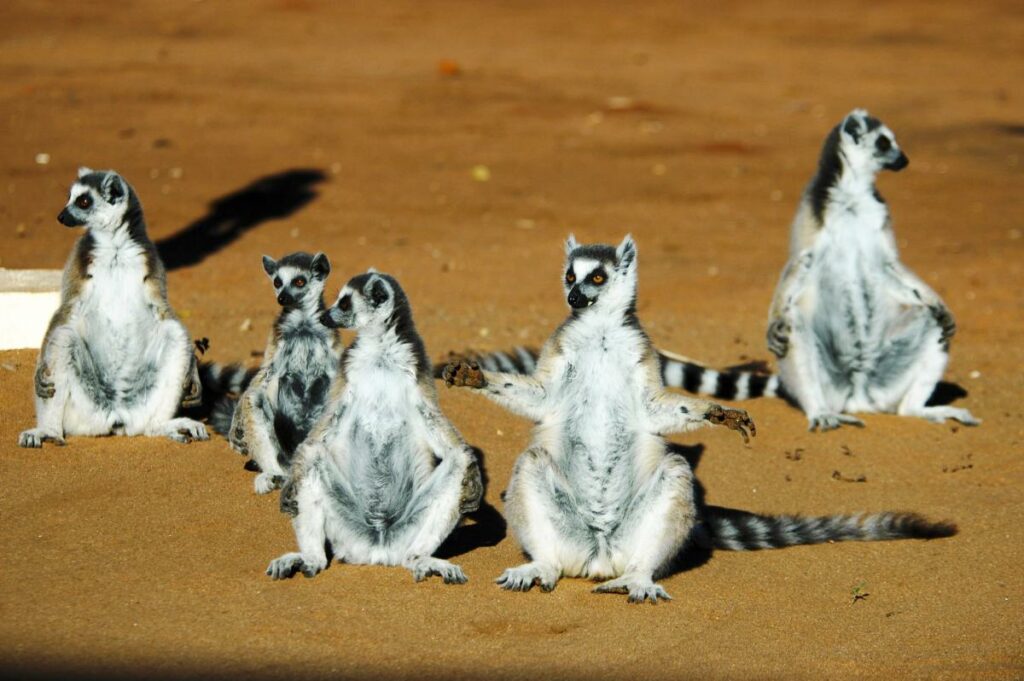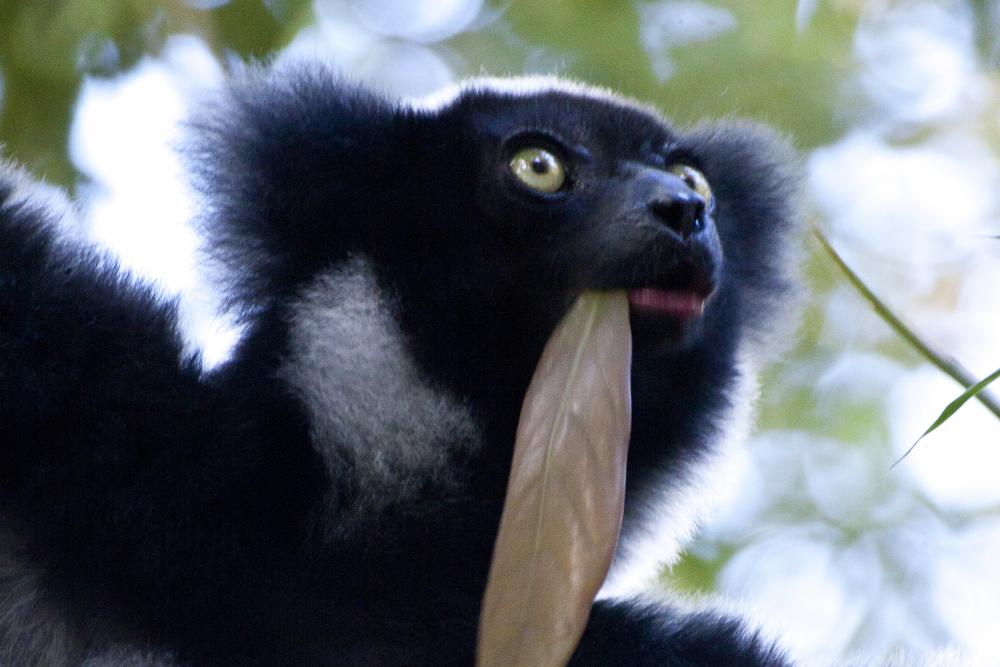IUCN Save Our Species Calls for Grant Proposals to Conserve Lemurs in Madagascar

This present call runs through Sunday 3 June 2018 23:59 CET and the next call is expected to take place in 2019. While previous calls between 2010 and 2015 were broader in terms of geographic and taxonomic grouping, the present call is the third of four since then which is exclusively for conservation projects on threatened lemurs in Madagascar.

Dr. Christoph Schwitzer, Director of Conservation at Bristol Zoological Society said, “We have already been able to build good momentum for lemur conservation with the current 29 projects that are being funded through IUCN Save Our Species, all of which respond directly to the IUCN Lemur Conservation Strategy. Adding another wave of projects will keep this momentum and enable project directors to collaborate and learn from each other, which helps build capacity among Malagasy civil society organisations.”
Why focus on lemurs? In short, because they embody significant biodiversity, because conservation action for lemurs is urgently necessary, because of the irreplaceable role of lemurs in Malagsy ecosystems, culture, and economy, and because investment in their conservation is expected to be highly cost-effective. Lemurs are the most diverse group of primates in existence. For millions of years isolated on the island of Madagascar, they have undergone an evolutionary adaptive radiation to fill many distinct niches: eating insects, bamboo, fruit, or leaves; with either females or males socially dominant; nocturnal, diurnal, or crepuscular; strictly arboreal to partly terrestrial; and ranging in size from the diminutive mouse lemurs that weigh only 30 g to the 9-kg indri, while much larger species – up to 200 kg – appear to have been driven to extinction around 2,000 years ago. Today, 113 species and subspecies remain, within 15 genera and five families, including the family Daubentoniidae whose only living species is the bizarre aye-aye with its uniquely modified long middle finger used in foraging. You can explore some of the amazing diversity of lemurs here.

Conservation action is urgent
Threats include poaching and habitat loss and habitat deterioration, and for many species the numbers – already at an all-time low – continue to decline to this day. While lemurs are generally respected by local cultures and officially protected under Malagasy law, law enforcement is often complicated by widespread poverty, a lack of awareness and the need to strengthen policy and institutions. As a result of these challenges, the IUCN estimated in 2013 that 90% of lemur species could be extinct by 2033 to 2038 if no drastic action is taken now to conserve them and their habitat. Examples of conservation activities funded by grants to date include protecting species in the field, combating poaching or illegal logging, raising awareness, and stimulating sustainable alternative economic activities for local communities, or others. Explore the interactive map to see where Save Our Species has funded projects in the past.

Conservation of lemurs will pay off
Besides protecting species and their habitat, IUCN Save Our Species grants also often aim to improve the life of local people. Madagascar is ranked as a Low Income Country by the World Bank. For example, 76% of the population lives on less than US $1.90 per day, while the number of children who don’t go to school is the fifth highest in the world. Driven by poverty, some people turn to destructive activities such as poaching lemurs, illegal logging, or illegal mining. However, this also means that well-invested conservation funding can make a huge positive difference on lemurs and their habitat, and allow people to improve their livelihoods through ecologically sustainable activities such as ecotourism, sustainable fisheries, and horticulture. And by preferably funding projects by Malagasy NGOs that employ local people – importantly, also women – grants help ensure that the monies stay within the local economy.

The ideal IUCN Save Our Species grant proposal
What kind of projects are we looking for? “We evaluate favourably projects that propose ambitious but realistic conservation activities in line with the Lemurs Conservation Strategy: projects that have clear results and targets and aim at developing strong partnerships with relevant stakeholders and national and local authorities. We encourage projects by local Malagasy NGOs that employ or otherwise empower women and work with local communities,” says Ana Nieto, Species Conservation Grants Coordinator at IUCN.
Examples of previous and ongoing projects
Let’s look at some lemur conservation projects funded by Save Our Species after previous calls for proposals.
For example, Malagasy NGO Madagasikara Voakajy ran a project educating young people between 14 and 25 from Mangabe — a new protected area and home to populations of Critically Endangered Indri and Diademed Sifaka — about lemurs while giving them hands-on training (in the form of a team contest) in sustainable agroforestry techniques such as tree planting, poultry culture, and rice farming. Throughout the project, interviews with the participants were broadcast on local radio, in which they talked about their work and lemur conservation.
Omaha’s Henry Doorly Zoo and Aquarium, together with local partners that included teachers and government officials, created ten locally-run nurseries for native trees to aid the reforestation of the area around Kianjavato, home to the Critically Endangered Greater Bamboo lemur and Black and White Ruffed lemur.
French NGO Helpsimus works with small farmers around Ranomafana National Park to help them coexist with the Critically Endangered Greater Bamboo lemur living on their lands, to manage natural resources such as bamboo (the bamboo lemurs’ main food source and simultaneously an important building material for local people), and to promote sustainable economic development of their communities.
The Malagasy NGO Association Fanamby empowers local communities and helps to reduce disturbance of threatened lemurs in the forest corridor of Anjozorobe Angavo, by stimulating ecotourism, improving agricultural practices, establishing a tree nursery for reforestation, and settin up a community-run forest patrol.
Save Our Species congratulates all SpeciesSavers on their excellent work and look forward to fund similarly exciting projects through the new call for proposals – to benefit lemurs, their habitat, and local people who depend on them!
Apply for a grant
If you represent an NGO working with lemur conservation and feel inspired by these projects and the Lemur Conservation Strategy, consider applying for a Save Our Species Threatened Species Grant. Visit our portal to download template files and submit your proposal in either English or French. First carefully read the “Detailed Instructions for Applicants 9 April 2018 – 3rd June 2018”, downloadable here. Previous IUCN Save Our Species grantees remain eligible to apply for a new grant under the present call.
IUCN Save Our Species was founded in 2010 to promote the long-term survival of threatened species, their habitat, and the people who depend on them.







